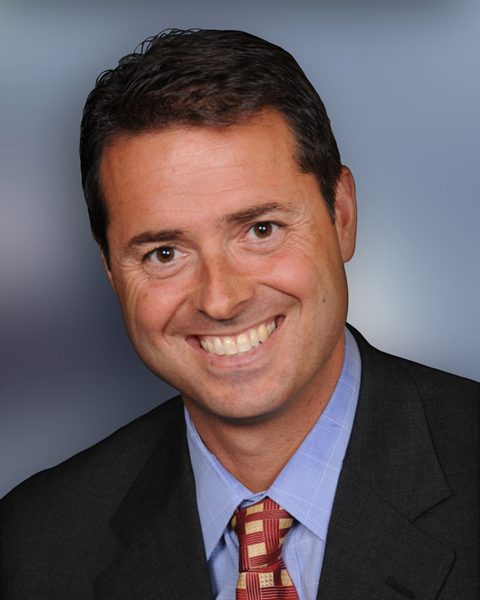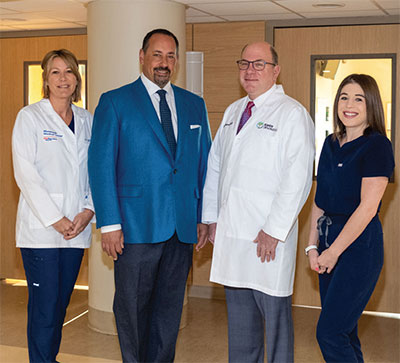
Following best practices can help keep young baseball players safe and healthy.
Baseball season is here, with many young athletes not only benefiting from its combination of physical activity and coordination but also learning important lessons about teamwork and leadership.
But as with most sports, baseball also comes with risks. Repetitive throwing and improper technique can lead to injuries that sideline young players, and it’s best for players, parents and coaches to stay abreast of best practices to minimize potential problems.

“Many baseball injuries are preventable,” says Christopher Spagnuola, MD, an orthopedic surgeon with RWJBarnabas Health (RWJBH) partner Seaview Orthopaedic & Medical Associates who is on staff at Monmouth Medical Center, an RWJBH facility, and is team physician for the Jersey Shore Blue Claws minor league baseball team. “By focusing on proper mechanics and responsible pitching practices, we can ensure that young players stay healthy and enjoy America’s pastime through adolescence and into adulthood.”
Common Causes
Among the most common issues are overuse injuries, particularly in the elbow and shoulder. These often occur when repetitive throwing creates stress on growth plates—areas of bone that are weaker than mature bone in developing children and adolescents.
Studies have linked pitch count and injury risk. Major League Baseball and other organizations publish a variety of guidelines and best practices to keep young players healthy. These include setting and following limits on the number of pitches that athletes should throw daily.
Throwing mechanics are another important consideration. “Improper throwing motion puts undue stress on certain joints and muscles, which may increase the risk of injury,” says Dr. Spagnuola. “Qualified and experienced coaches who can teach proper mechanics are essential.”
Pitchers should strive for a smooth, controlled motion that engages the entire body, not just the arm, Dr. Spagnuola says. “Young players should learn to throw a fastball first, followed by a changeup,” he notes. “Certain types of pitches, such as curveballs, can lead to an increased chance of arm injury and are not recommended for younger athletes.”
He also advises caution about playing multiple sports simultaneously, which can increase the likelihood of overuse injuries if proper rest and recovery aren’t prioritized.
“Open communication between coaches, parents and other caregivers is vital,” says Dr. Spagnuola, who points out that adults may need to pull back enthusiastic team players to keep them safe and healthy. “Coaches should be aware of a player’s participation in other sports and be willing to adjust playing time and practice intensity accordingly. Parents, meanwhile, should be alert for signs of fatigue or pain.”
Principles for Players
A variety of additional best practices can help baseball players—and other young athletes—perform at their peak while maintaining optimal health:
- Use proper equipment: A well-fitting glove and appropriately sized bats can help prevent hand and wrist injuries. Regulation helmets for batters are crucial to safeguard against risks of serious injury or even death.
- Warm up and cool down: Warm-up activities, including light cardio, arm circles and stretches, are essential before throwing or playing. Stretching after a game can also help prevent strain and soreness.
- Increase strength and conditioning: A strong core and muscular system can provide stability and help absorb forces generated during pitching and throwing. Age-appropriate strength training programs can reduce injury risk and improve athletic performance.
- Take time to rest: Many eager young players are tempted to get out on the field and play as often as possible, but they need to allow ample time for rest and recovery.
- Listen to your body: Even as parents and coaches monitor young athletes, it’s important for players to monitor themselves as well. Pain is the body’s way of saying something is wrong. In today’s competitive youth sports environment, young players should never feel pressured to “play through the pain” but should communicate discomfort to parents and coaches so appropriate steps can be taken.
“When it comes to baseball or any youth sport, if you aren’t having fun, then something is wrong,” says Dr. Spagnuola. “By encouraging proper education and communication, emphasizing the importance of injury prevention and reminding young players to speak up, we can keep athletes safe and let them focus on the most important parts of the game: working together as a team, staying fit and healthy, and having fun.”

Celebrating recertification by the Joint Commission at Monmouth Medical Center’s Joint Replacement and Spine Center are (from left) Dana Delatush, RN, MSN, AGPCNP-BC, Clinical Director, Todd 6 East and Greenwall 6; Jason Cohen, MD, Chair of Orthopedic Surgery; David Chalnick, MD, Medical Director of Joint Replacement Surgery; and Nicole Wilps, RN, BSN, Assistant Clinical Director and Joint and Spine Surgery Program Coordinator.
Achieving Joint Commission Certification—Again
Monmouth Medical Center (MMC) has achieved Joint Commission Disease Specific Certification for Total Hip, Knee and Spine Surgery in recognition of the program’s commitment to excellence in providing care for joint replacement and spine surgery patients.
MMC has held the certification for 13 years, reflecting the center’s world-class care from experienced, board-certified physicians as well as low complication rates, outstanding outcomes and high patient satisfaction.
The recertification came with positive feedback from the Joint Commission’s surveyor, according to MMC’s Jason Cohen, MD, Chair of Orthopedic Surgery, and David Chalnick, MD, Medical Director of Joint Replacement Surgery. Aspects of the program that garnered praise included physician and leadership support, collaboration and teamwork, research-based recovery protocols including pain management, and community involvement such as former joint replacement patients who volunteer to coach new patients.
Learn more about Orthopedic and Sports Medicine services at RWJBarnabas Health.
